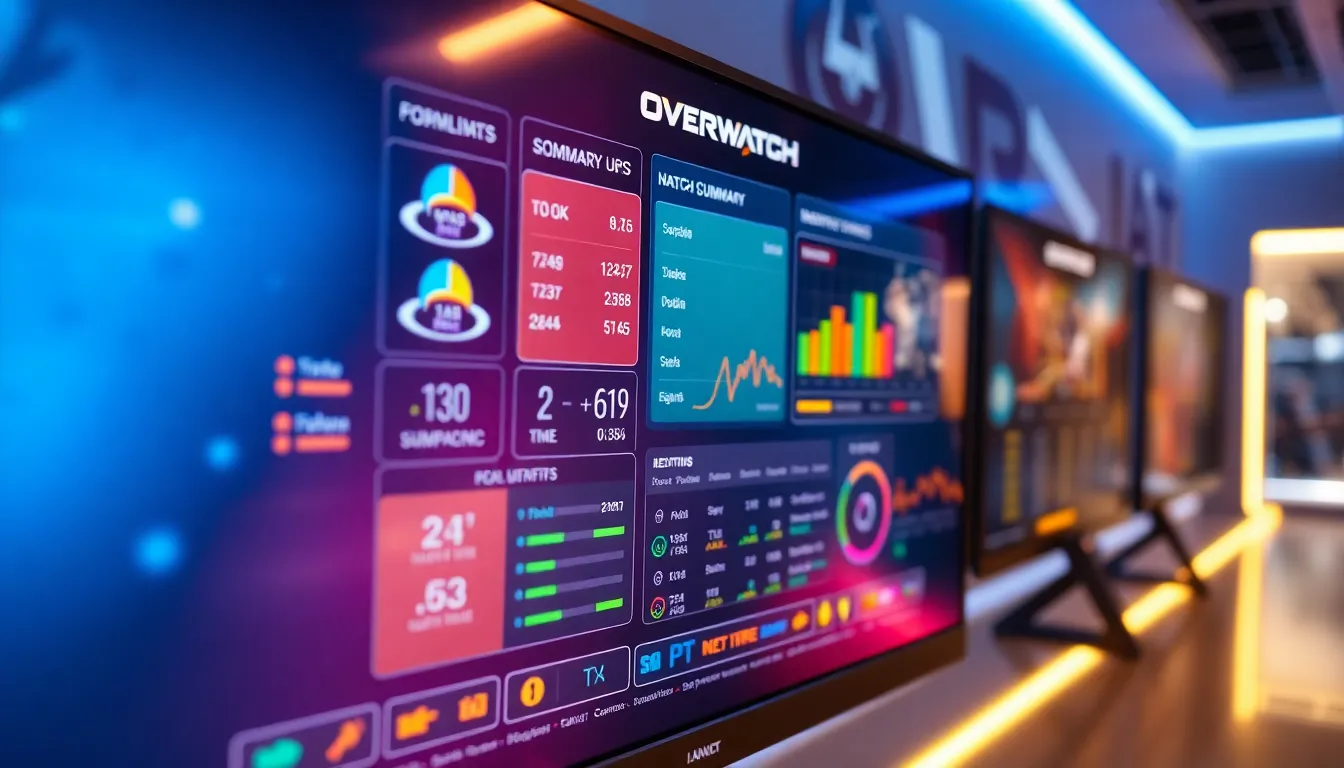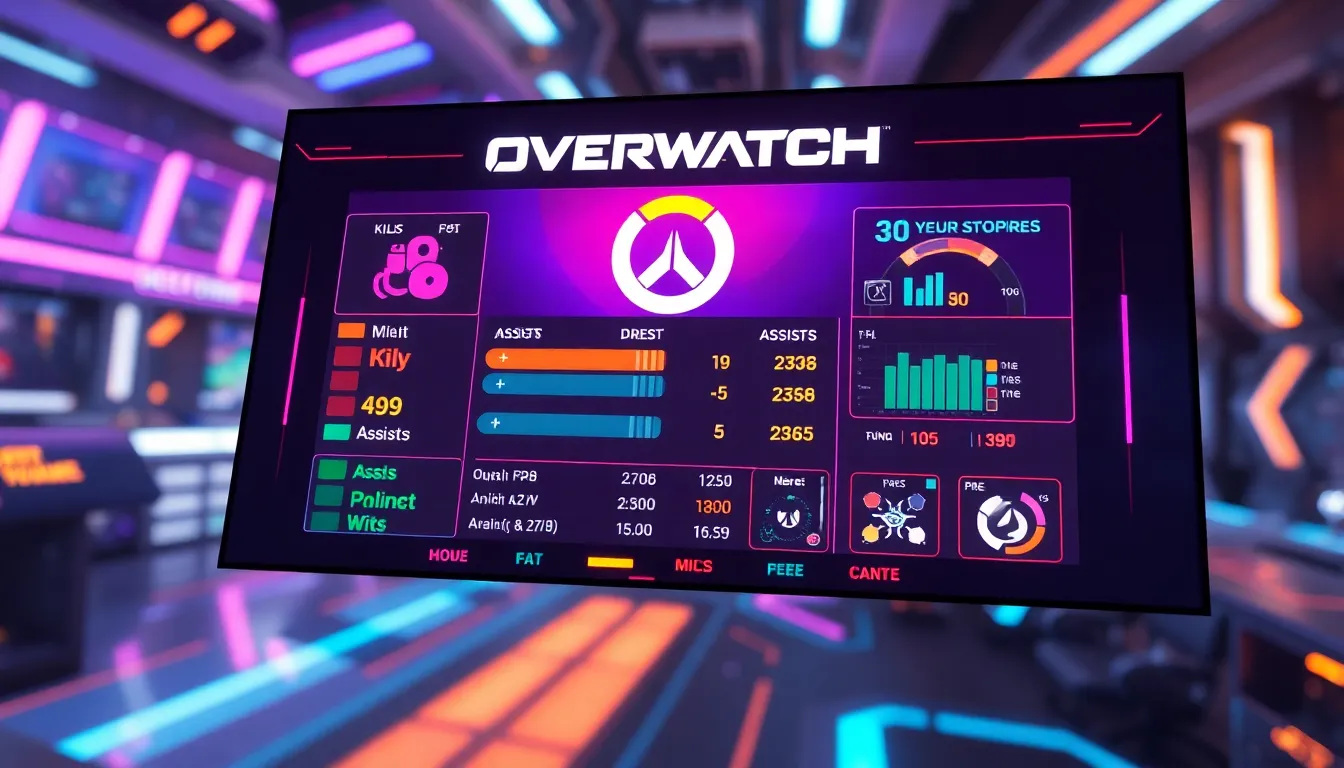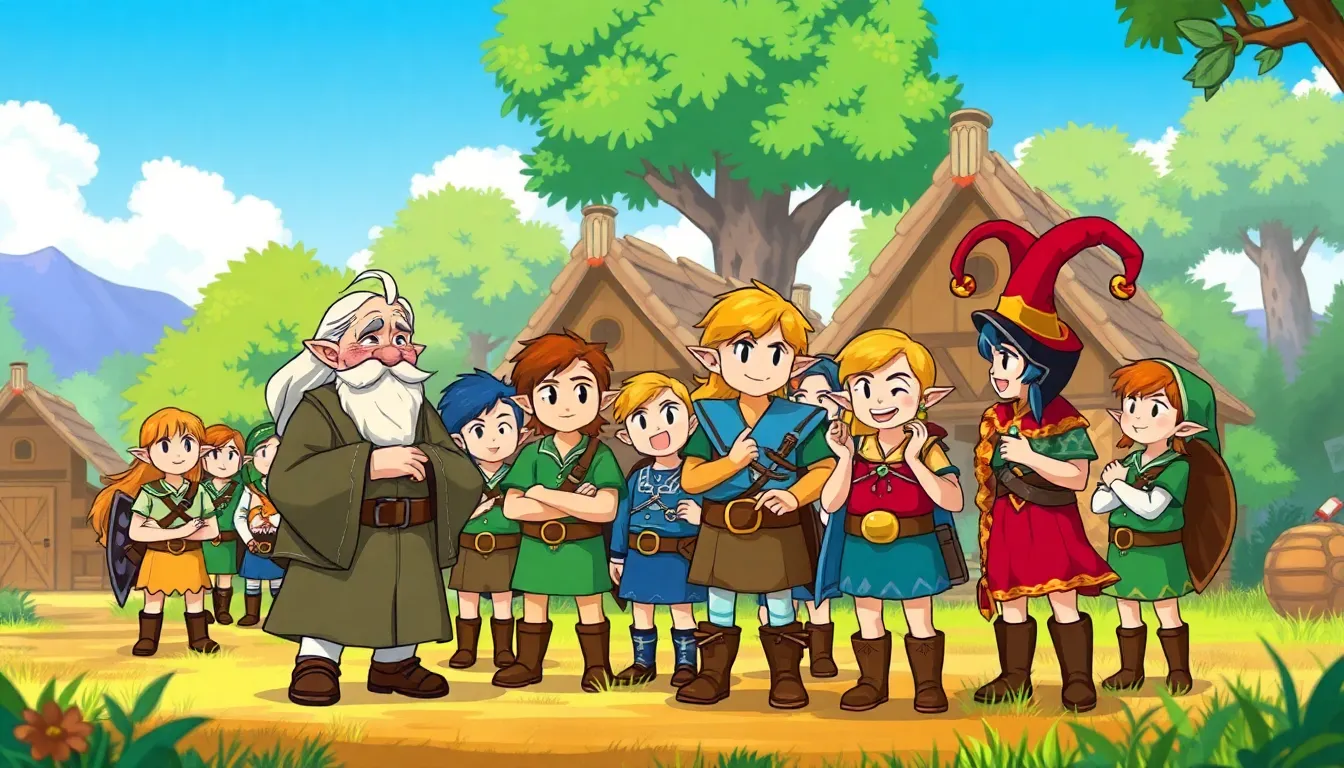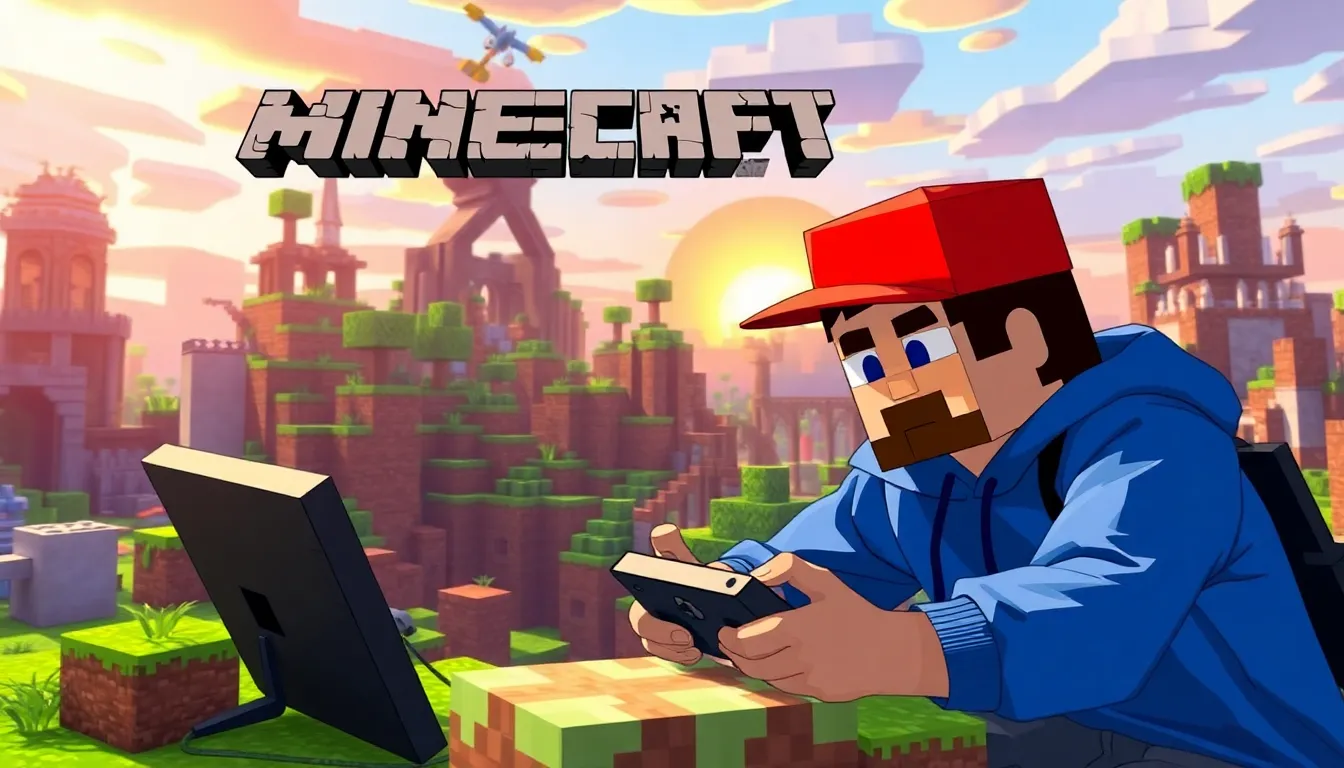In the fast-paced world of Overwatch, every second counts, and so does every stat. The scoreboard isn’t just a digital scoreboard; it’s a battlefield of pride, strategy, and maybe a sprinkle of friendly rivalry. Whether players are flexing their impressive kill counts or mourning their healing stats, the scoreboard reveals all. It’s like the gossip column of the Overwatch universe—juicy and revealing.
But what if the scoreboard could do more than just tally numbers? Imagine features that not only showcase performance but also enhance teamwork and strategy. With the right tools, players can turn those stats into a powerful weapon, helping them climb the ranks while having a laugh or two. Dive into the world of Overwatch scoreboard features and discover how they can transform your gaming experience from average to legendary.
Table of Contents
ToggleOverview of Overwatch Scoreboard Features
Overwatch offers various scoreboard features that enhance player experience. Detailed statistics provide insights into individual and team performance. Players can quickly view critical metrics such as kills, deaths, assists, and objective time. Each statistic reflects a player’s contribution, fostering a sense of accountability.
Interactive elements allow players to click and filter their stats. Players can focus on specific game modes or heroes, tailoring their analysis to personal goals. Highlighted performance metrics offer immediate feedback. Understanding these metrics can lead to better gameplay strategies.
The scoreboard also includes a visual representation of score trends. Graphs illustrate performance over time, helping players recognize patterns in their gameplay. Visualizing trends encourages players to reflect on areas for improvement.
Team composition information features prominently on the scoreboard. Players can assess how their hero choices impact the overall team strategy. Analyzing this data supports more informed decisions during matches.
Match history integration enhances the usability of the scoreboard. Players can revisit past games to analyze successes and failures alike. This retrospective approach can lead to improved tactics in future encounters.
Lastly, Overwatch scoreboard features support communication among teammates. Players can easily share relevant statistics, prompting discussions on strategy and performance. Emphasizing teamwork through these features fosters collaboration, contributing to overall team success.
Key Features of Overwatch Scoreboard

The Overwatch scoreboard includes essential features that enhance the gaming experience. These features focus on providing players with the necessary information to improve performance.
Player Statistics
Detailed player statistics contribute significantly to understanding individual and team dynamics. Metrics include kills, deaths, assists, and objective time. Tracking individual contributions helps players identify strengths and weaknesses. Real-time updates ensure players are aware of their current standing during matches. Filtering options allow focusing on specific game modes or heroes, adding versatility to how stats are viewed. Highlighted performance metrics offer immediate insights, facilitating immediate tactical adjustments.
Match Summary
The match summary provides a comprehensive overview of game performance. Key metrics, such as final scores, time played, and objectives completed, give context to the overall match outcome. Trends from previous games can be visualized, helping players recognize patterns in both their performances and team dynamics. Integration with match history allows players to revisit past encounters for analysis. This summary serves as a valuable feedback tool, driving improvement for future matches. Team composition details factor into the strategy as players evaluate hero choices for enhanced collaboration.
Comparing Scoreboard Features Across Game Modes
Scoreboard features vary across different game modes in Overwatch, directly impacting player experience and strategy. Quick Play emphasizes individual performance with metrics like kills and deaths, ideal for casual play. Competitive mode, however, introduces a more detailed evaluation, highlighting win/loss ratios and objective performance, fostering greater accountability among team members.
Team Deathmatch displays a simplified scoreboard focused on individual stats, allowing players to track their contributions without the added complexity of objectives. In contrast, Payload modes incorporate objective-based metrics, showcasing critical factors like payload distance traveled alongside traditional kills and assists. Visuals play a key role; clearer graphs or bars can indicate trends and performance changes across matches.
Highlighting player contributions serves to improve teamwork. In Escort maps, for instance, seeing which players excel in objective time helps teams strategize around their strengths. Heroes selected also influence scoreboard data, as specific roles provide unique metrics; damage dealers often highlight kill counts, while supports focus on healing and assists.
Real-time updates enhance engagement in all modes. Players receive immediate feedback, allowing them to adjust gameplay on the fly. Filtering options, available in all modes, let users toggle between hero performances and match history, further refining strategies. Summaries, particularly in Competitive play, offer an overview of completed objectives and final scoring, creating opportunities for post-match analysis and discussions.
Ultimately, scoreboard features in Overwatch serve as vital tools for performance tracking, team dynamics, and gameplay improvement, tailoring the experience to the demands of each game mode.
The Impact of Scoreboard Features on Gameplay
Scoreboard features significantly shape gameplay in Overwatch. Detailed statistics offer insights that directly influence player tactics. Players track metrics like kills, deaths, assists, and objective times to refine their strategies. Filtering options allow team members to focus on the most relevant data, enhancing decision-making. Real-time updates provide immediate feedback, creating opportunities for players to adjust their gameplay accordingly.
Visual clarity matters for player comprehension. Clear presentations of score trends enable players to identify patterns across matches. Players evaluate team composition and individual contributions, fostering better collaboration during matches. For instance, recognizing how specific hero choices impact strategies can increase overall effectiveness in games.
Match summaries serve as essential tools for reflection and improvement. Key metrics like final scores and completed objectives offer a comprehensive overview of performance. Integrating match history helps players analyze successes and failures, guiding their preparation for future games.
Variations in scoreboard features across game modes further influence gameplay dynamics. Quick Play emphasizes personal achievements, while Competitive mode introduces detailed evaluations of play styles. Team Deathmatch revolves around personal statistics, whereas Payload modes integrate objective-based data. Depending on the mode, the scoreboard adapts to enhance competitive experiences and strategies.
Highlighting significant player contributions enriches teamwork. For example, understanding objective time significantly boosts strategies on Escort maps. The varied experiences from each game mode underscore the role of scoreboard features in enhancing overall player performance and team success in Overwatch.
Scoreboard features in Overwatch play a crucial role in shaping the gaming experience. They provide players with essential insights that drive performance and enhance teamwork. By focusing on detailed statistics and real-time updates, players can refine their strategies and make informed decisions during matches.
The varied scoreboard elements across different game modes ensure that each player can assess their contributions and adapt to the dynamic nature of gameplay. Ultimately, these features not only promote individual improvement but also foster collaboration among teammates, leading to greater overall success in matches. Embracing these tools can elevate gameplay and deepen the enjoyment of Overwatch.



